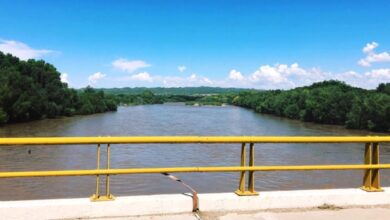How to be a responsible tourist? Follow these 5 tips
This is a detailed guide that will help you to be a sustainable tourist and not contribute to the problem of over-tourism

According to the South China Morning Post, in 2017 tourism contributed 7.9 trillion dollars to the economy and it went on to represent 10% of the world's gross domestic product. For 2030, it is projected a growth of 1.8 trillion tourists on an international level.
Leer en español: ¿Cómo ser un turista responsable? Siga estos 5 consejos
There are a series of measures that you can take to be a sustainable tourist, in accordance with the Equo party and the Manifest of the Responsible Traveler of the InterMundial Foundation:
1. Choose sustainable, collective, clean and efficient means of transport "replacing the rush, noise, traffic jams, air and noise pollution, and waste generated by the usual means of transport." You could use the bicycle to travel within the cities and the bus within a country to reduce your environmental footprint.
2. Encourage the local development of the destination by consuming local products and services, whose direct benefits favor the most vulnerable. Buy only what you need and do it at a fair price that does not destabilize the local economy and the living conditions of the owners or employees of the premises.
3. Take care of the resources that are offered and try to access products or services that guarantee sustainable exploitation of them and that respect the natural habitat of the native fauna and flora. Do not leave garbage and collaborate with the sanitation and cleaning programs carried out in the destination
4. Change the travel times to avoid visiting crowded places in high season. You can travel on weekdays instead of Saturdays or Sundays or visit coastal sites in winter enjoying milder temperatures.
5. Be an example of tolerance and make sure you know the social norms of the places you are visiting to avoid offensive behaviors that cause discomfort among locals.
Also read: What to do with your dog when you go on a trip?
The giant steps of tourism
In 2019, the Global Summit of the World Tourism Council will be held in Seville, Spain. One of the topics that will be addressed at the summit will be the growing number of visitors to the most popular destinations in the world, the local resentment towards tourists and the latent threat to some ecosystems.
In fact, according to the BBC, there are already several sites that have had to establish measures to minimize the damage: in Caño Cristales, Colombia, the river closed in December last year to protect aquatic plants. In Machu Picchu, Peru, the number of people who can do the Inca Trail per season was limited.
However, these can be converted IGNORE INTO temporary and useless long-term measures. The fight against "over-tourism" has much more to do with personal attitudes and interests than with restrictive laws.
At a summit of tourism ministers in London, held in November last year, UNWTO Secretary-General Taleb Rifai said "we cannot continue to build five-star hotels in three-star communities. Jobs and charity are not enough, we need to diversify visitor activities, reduce seasonality and create awareness about the destinations that are less traveled."
LatinAmerican Post | Luisa Fernanda Báez
Translated from “¿Cómo ser un turista responsable? Siga estos 5 consejos”





